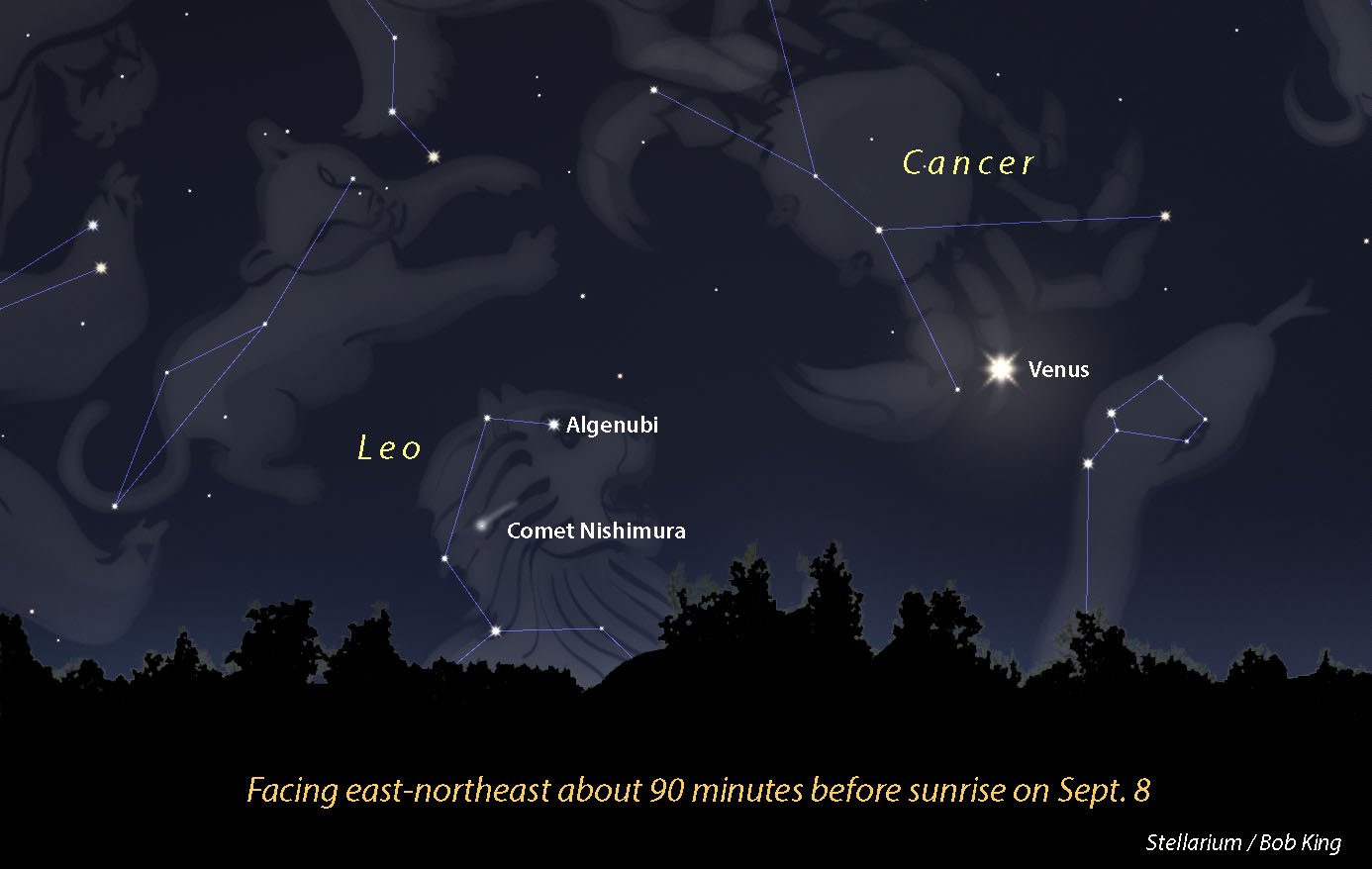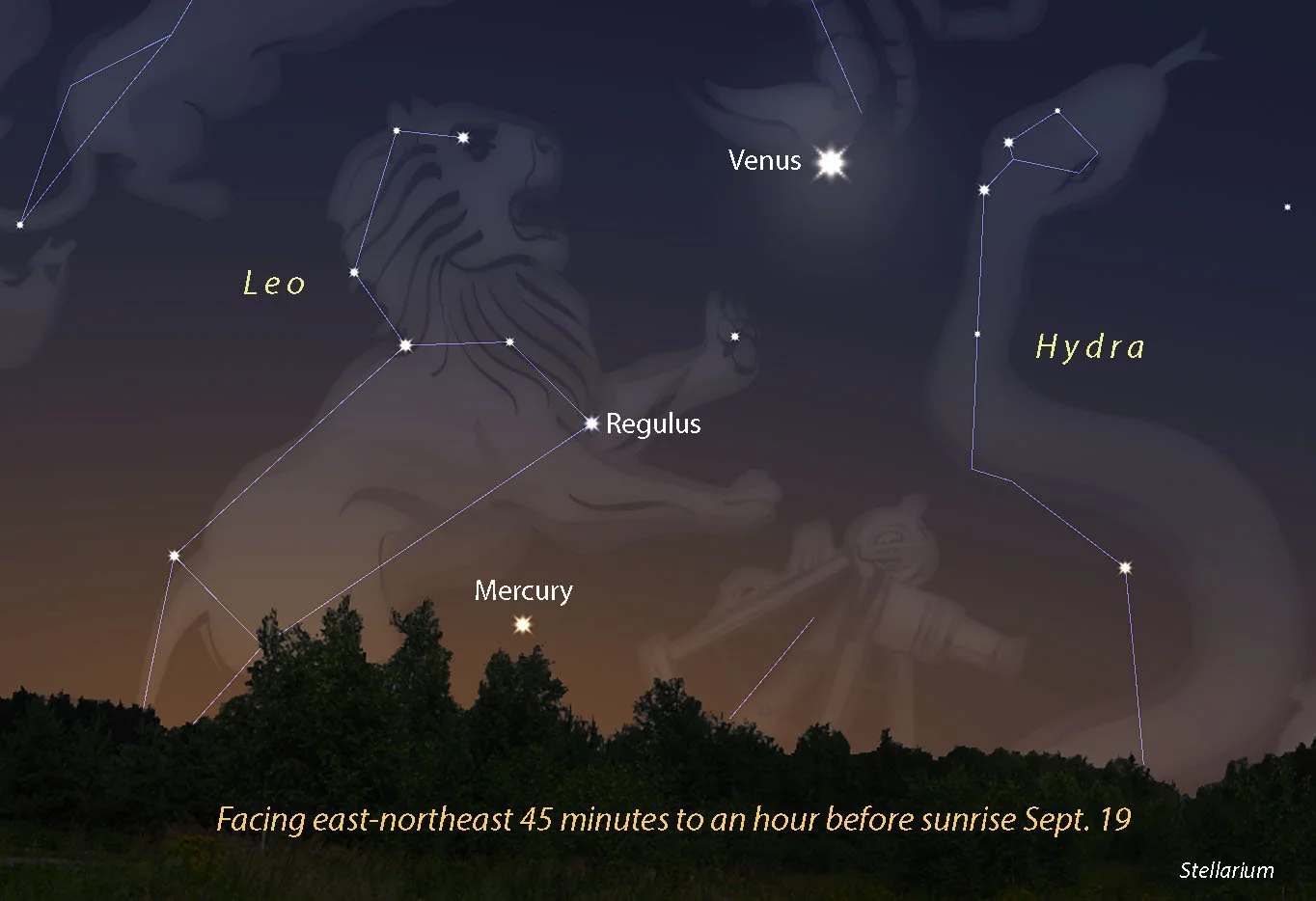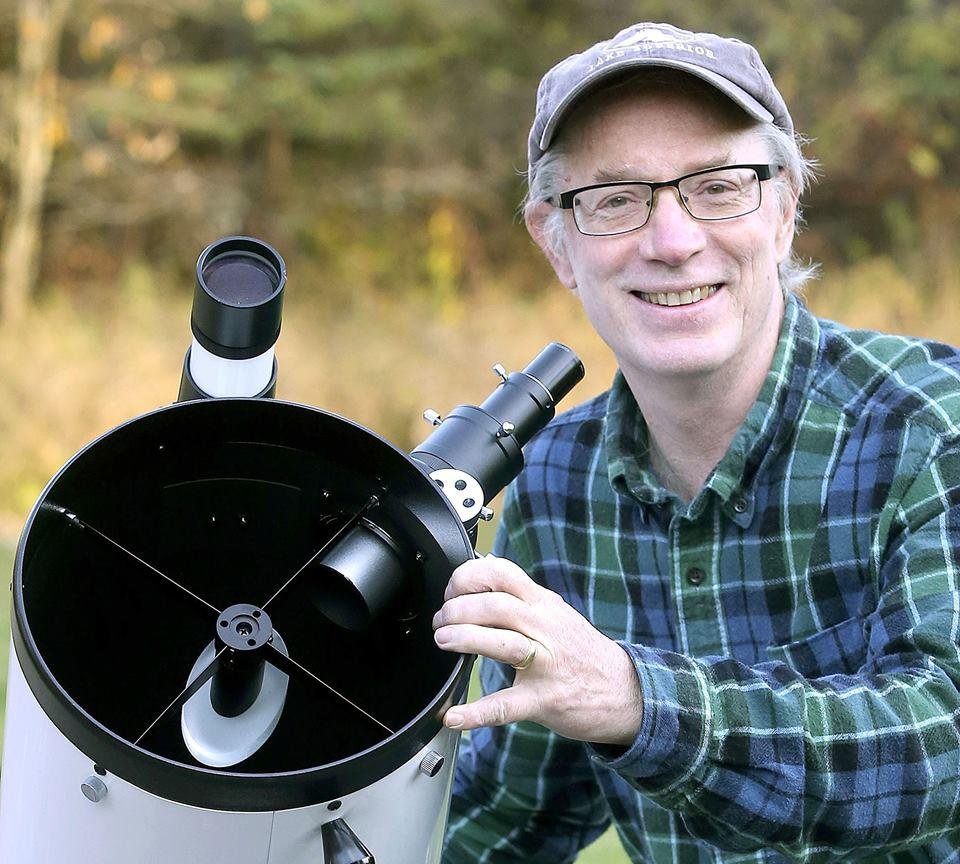September 2023 Night Sky Calendar
As summer transitions to fall Saturn and Jupiter light up the evening sky while Mercury and Venus grace the dawn. After a brief hiatus in the solar glare Venus rapidly climbs the eastern sky at dawn. You can’t miss it — no star blazes quite as brightly as this cloudy planet. Meanwhile, Mercury puts in its best morning appearance of the year for northern hemisphere observers. Look for it about three fists to the lower left of Venus from mid-to-late September.
A moderately bright comet should also be visible in binoculars at dawn very low in the northeastern sky during the first 10 days or so of September. To spot Comet Nishimura you’ll need an unobstructed view in that direction and smoke-free skies. Watch for additional maps and more details about the comet my Facebook page “Astro Bob’s Astronomy for Everyone”.
Finally, this month’s full moon is a special one — the Harvest Moon. When full in September the moon’s path is nearly parallel to the horizon for several evenings in a row, so successive moonrises are just 15-25 minutes apart. Back before electric lighting farmers welcomed the extra light to bring in the harvest. When full in spring the moon’s path tilts steeply, delaying successive moonrises by over an hour.
Events:
September 1 – Waning gibbous moon shines midway between Saturn and Jupiter. See the trio from 11 p.m. local time into the wee hours.
September 3 and 4 – Waning gibbous moon sits to the upper right of Jupiter (Sept. 3) and to the left of the planet the following night
September 6 – Last quarter moon
September 6-11 – Comet Nishimura, discovered by a Japanese amateur astronomer on August 11, will glow bright enough to see in binoculars from a dark-sky location. It will look like a small, fuzzy blob with a short tail very low in the east-northeast starting about 90 minutes before sunrise.
September 11 and 12 (a.m.) – Thin crescent moon to the left of Venus both mornings. Venus is the brilliant “star” in the lower half of the eastern sky 1-2 hours before sunrise.
September 14 – New moon
September 18 – Slender lunar crescent returns at dusk low in the southwestern sky
September 18-30 (a.m.) – Mercury appears the eastern sky about three fists to the lower left of Venus and quickly brightens. Look for a solitary “star” about 7-10° high 45 minutes to an hour before sunrise. You’ll find your local sunrise time at timeanddate.com/sun. Binoculars will help in case smoke or haze dims the view.
September 22 – First quarter moon
September 23 – At 1:49 a.m. CDT autumn officially begins! Day and night are nearly equal at 12 hours apiece across the entire planet. The sun will rise due east and set due west.
September 26 – Waxing gibbous moon in conjunction 3° south of Saturn
September 28-29 – Full Harvest Moon. Since the moment of fullest moon occurs around 5 a.m. on Sept. 29, it will appear full to the eye two nights in a row. To find your local moonrise time go to timeanddate.com/moon
Bob King is an amateur astronomer, author, and passionate educator. He served as a photographer and photo editor at the Duluth News Tribune for 39 years and taught at the UMD planetarium. Bob’s work had a great impact on Voyageurs National Park. To achieve International Dark Sky Park certification, the park was required to host dark sky education events. Through the Night Sky Explorer webinars, the Conservancy was able to fulfill this component and help secure the certification for Voyageurs National Park. We can’t thank Bob King enough for sharing his talents and knowledge with the Conservancy community to support dark sky preservation.





